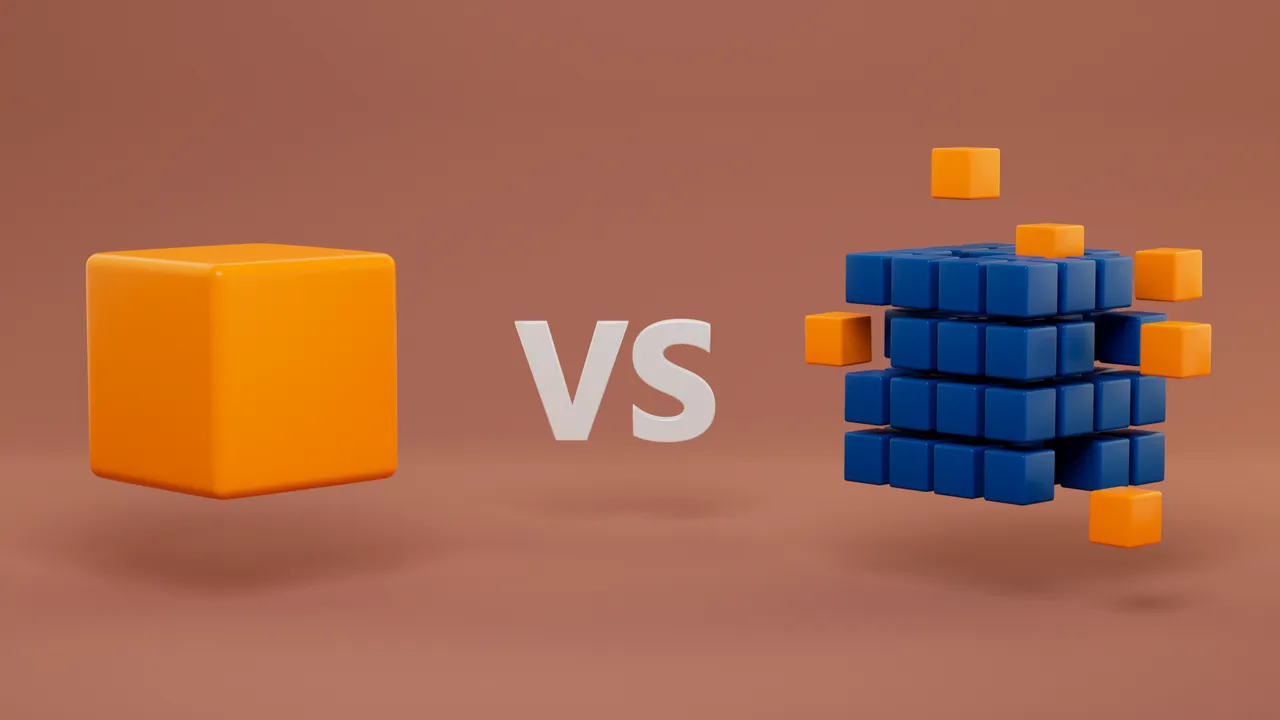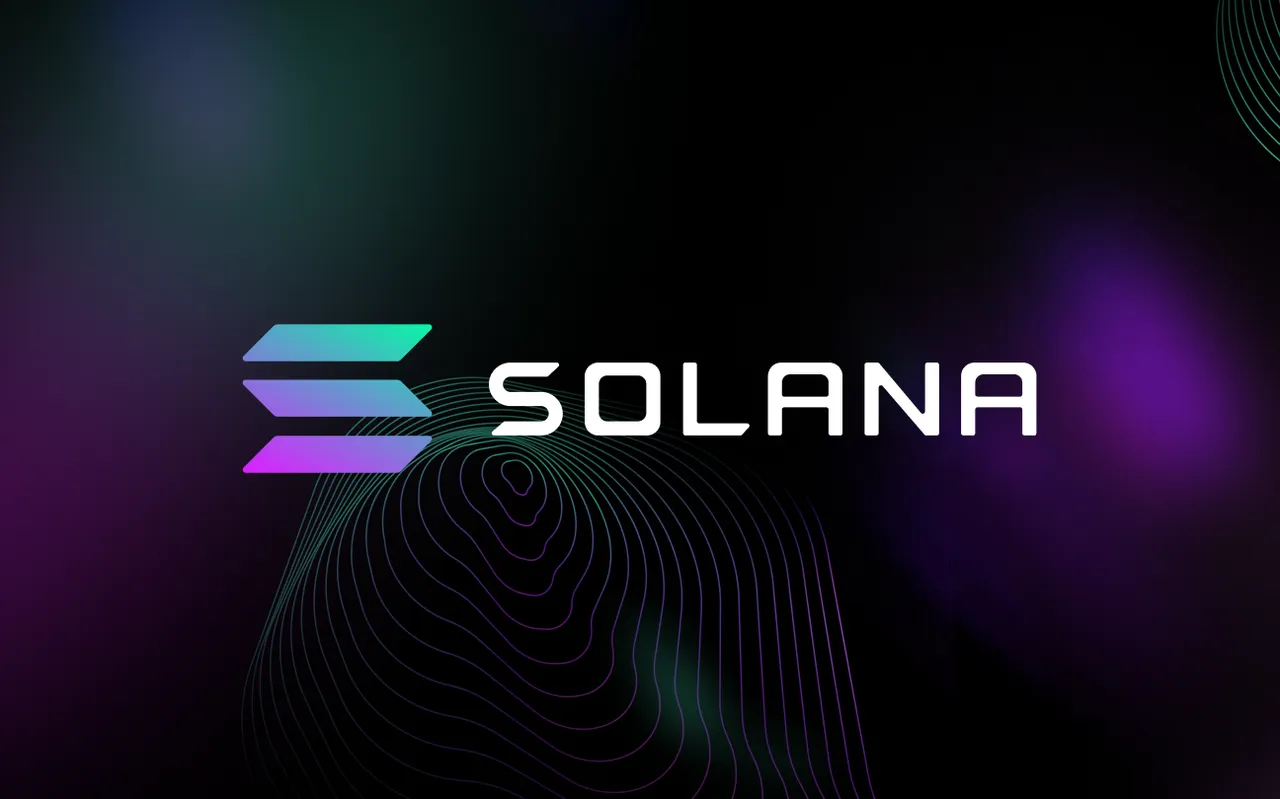The design of a blockchain is often something that ordinary crypto users don't pay attention to or don't make a point of understanding how it works. Which is understandable, since most people are not directly involved in the development process of this technology, but only looking to interact with the crypto ecosystem.
However, learning how the basic technical aspects of something you use or invest in won't do you any harm, on the contrary, it can bring you more confidence and security about what you're doing.
Today we will talk about the difference between monolithic blockchains and modular blockchains and understand what has developed from there for cryptoassets to gain more and more adoption.

Understanding the main concepts of Blockchain
To better understand how blockchain designs work and how they differ, let’s first understand what the main concepts of a blockchain are.
Simply put, each blockchain has the same core tasks: providing consensus and security, ensuring data availability, and executing transactions.
Network consensus: It is the mechanism that defines the current state of a blockchain, that is, it is what ensures that all validating nodes have the same information status, which determines how transactions are ordered and how new blocks are added to the chain.
Data availability: It concerns the data that is stored in each block and point of a blockchain (Blockspace).
Transaction execution: Nodes perform transactions and thus advance the state of the blockchain.
Typically, most blockchains handle these tasks on the same layer – these blockchains, like Bitcoin, are called “monolithic blockchains”. Let us now understand how this type of blockchain works.
Monolithic Blockchains
They have been around for over a decade and refer to a design that seeks to handle the key functions of a blockchain (network consensus, data availability and transaction execution) within a single system (L1). That is, all nodes and validators on the network are required to perform the same transactions.
Ethereum, Bitcoin and Solana are some of the current blockchains that have such an architecture. For Bitcoin and Ethereum, this monolithic approach “has led to crippling inefficiencies, reflected in the blockchain trilemma.” The trilemma implies the trade-off between decentralization, security, and scalability. Bitcoin and Ethereum chose to be highly secure and decentralized, falling behind in scalability.
To participate in a monolithic blockchain, it is necessary to run a node in line with the requirements defined by the network. Let's take the example of Bitcoin. Any user who wants to run their own node needs to first identify what type of node they want to run. After configuring it, it is necessary to download the blockchain data from the network. After this process, they participate in the network following the protocol rules.
Examples of monolithic blockchains
Bitcoin: Bitcoin is the original monolithic chain, requiring nodes to execute each block against its copy of the blockchain. While this increases decentralization and security, it limits Bitcoin's ability to support high throughput or scale to accept more users (Bitcoin blockchain processes 5-7 transactions per second).
Ethereum: Ethereum, without sharding and rollups, exists as a monolithic chain. This explains its low transaction speeds (15-20 transactions per second) and greater emphasis on decentralization and security.
Solana: Another monolithic chain that handles execution, data availability, and consensus all in one place. Despite allowing more transaction speed and scalability, it puts its decentralization and security at stake, especially since the hardware requirement to run a validator node is high.
Problems with monolithic blockchains
In a monolithic blockchain, nodes need to perform all three actions at once. If, however, the blockchain compromises any of the aspects mentioned above, then the blockchain trilemma enters. It consists of scalability, decentralization, and security. Traditionally, a blockchain can only achieve two of these three components.
Benefits of a monolithic blockchain design
One of the biggest benefits of a monolithic blockchain is that if it focuses on staying decentralized and secure, it becomes a non-scalable blockchain. Decentralization lowers the barrier to entry for all users who want to utilize the blockchain to execute transactions. This is one of the biggest reasons why Bitcoin and Ethereum currently rank first when it comes to cryptocurrency market cap. They better follow the narrative of a truly permissionless, decentralized ecosystem that cryptocurrency was intended to be.
Scalability and higher throughput have always been a point of contention with monolithic blockchains. Simply put, scalability refers to the measure of a system's ability to adapt to unexpected changes or increase workload. Greater scalability means competitive advantage and a higher level of performance, even in a high-stress environment.
Monolithic blockchains have been the industry standard since the emergence of Bitcoin, but that reality is changing. With increasing evidence that the performance of monolithic blockchains is suboptimal, another type of blockchain is gaining in popularity. Modular blockchains.
Modular Blockchains
One of the biggest benefits of a modular blockchain is its ability to divide various tasks into segments. This fragmentation of tasks helps the blockchain scale without compromising security.
A modular chain only focuses on specific tasks, while transferring the rest to other layers.
Modular blockchains work based on the principle of modularity, which refers to the separation of a system into distinct components that can be combined in various ways to achieve specific goals. Modularity depends on specialization: each component can only do a few things, but it must do them well.
Modular blockchains focus on handling a few select tasks and outsource the rest to one or more separate layers. Ethereum shardings are a form of modularity in which different components (shard chains) handle different tasks. In data sharding, shard chains store different parts of Ethereum data, while execution sharding allows each shard chain to process its own set of transactions, which increases data throughput and reduces processing times.
How will Ethereum work in a modular concept?
Like Bitcoin and many first-generation blockchains, Ethereum was designed as a monolithic blockchain. However, to increase scalability and sustainability, the Ethereum network is transitioning to a modular structure.
Ethereum became the first blockchain to adopt a modular chain design, due to its smart contract capabilities. As more dApps and smart contracts were developed on the network, it became clear that Ethereum needed to solve problems of low transaction speed and high gas costs.
Through shardings and rollups, Ethereum 2.0 will work with a form of modularity in which different components (chains of fragments) handle different tasks. In data sharding, shard chains store different parts of Ethereum data, while execution sharding allows each shard chain to process its own set of transactions, which increases data transfer capacity and reduces processing times .
Monolithic blockchains and modular blockchains have their advantages and disadvantages. Choosing either option requires understanding your project needs and acceptable tradeoffs. A high-value DeFi application might opt for the security guarantees of a monolithic blockchain, while projects that require cheaper and faster operations (e.g. high-frequency trading) might be better suited to a modular blockchain optimized for execution.
As development in the crypto industry continues to grow, a modular blockchain ensures that a network remains highly scalable without sacrificing optimal levels of security and decentralization. Monolithic blockchains like Ethereum and Solana are already moving to modular frameworks as developers recognize the need for a seamless and cost-effective flow of transactions.



